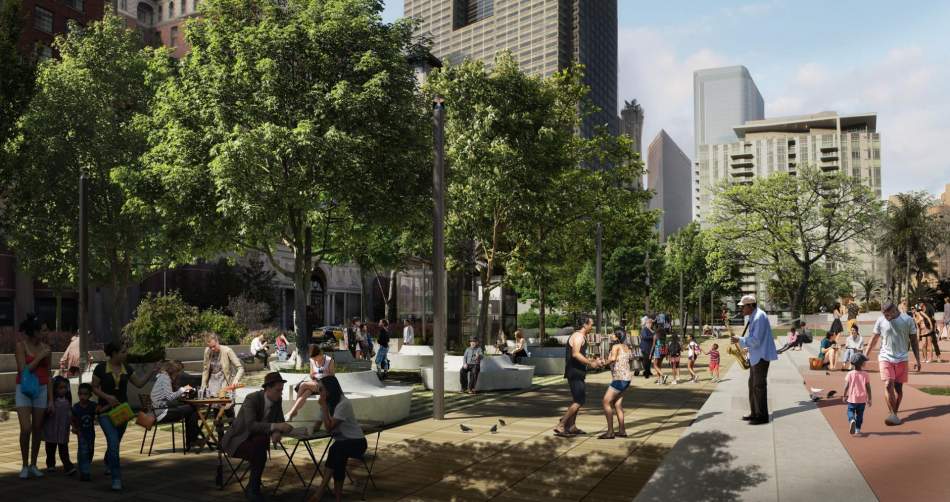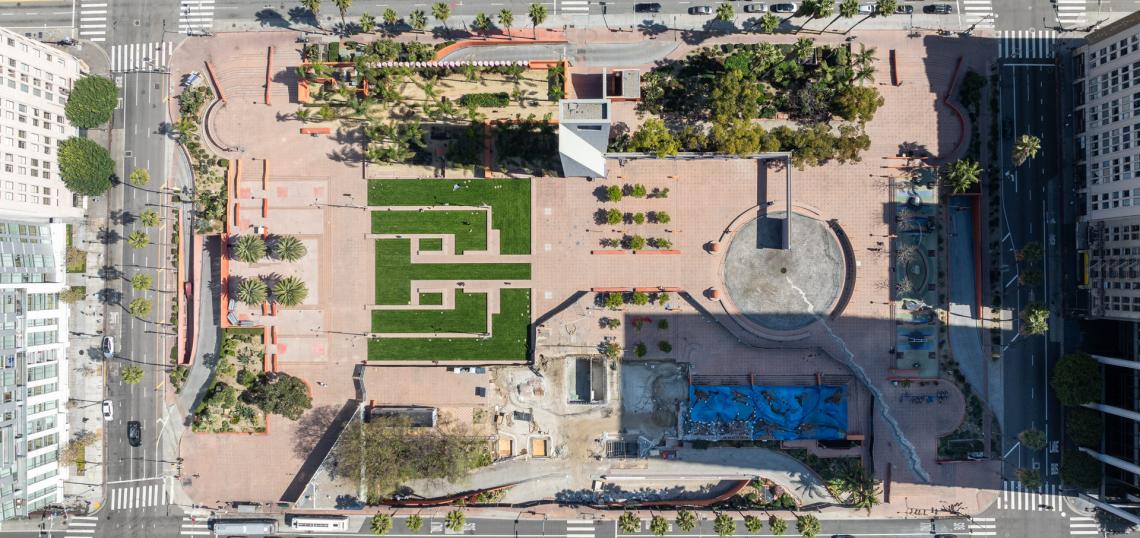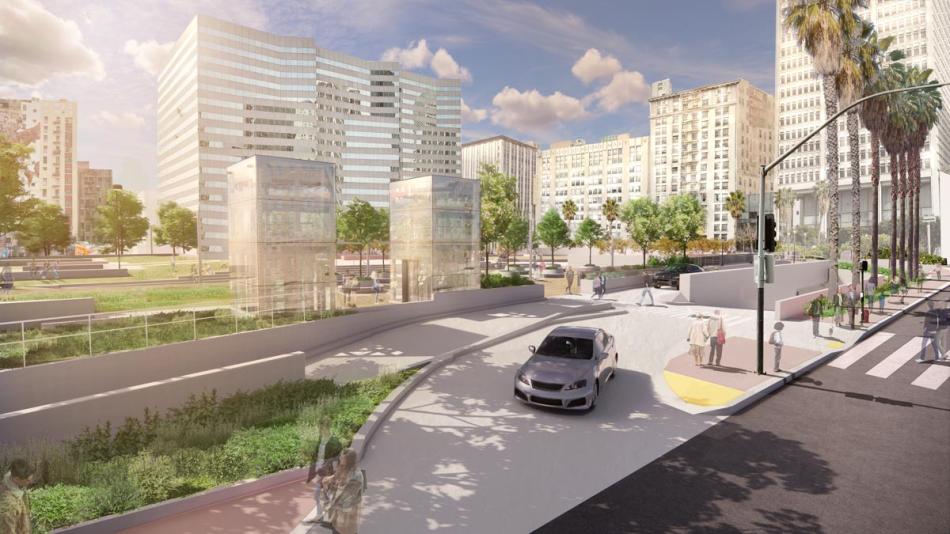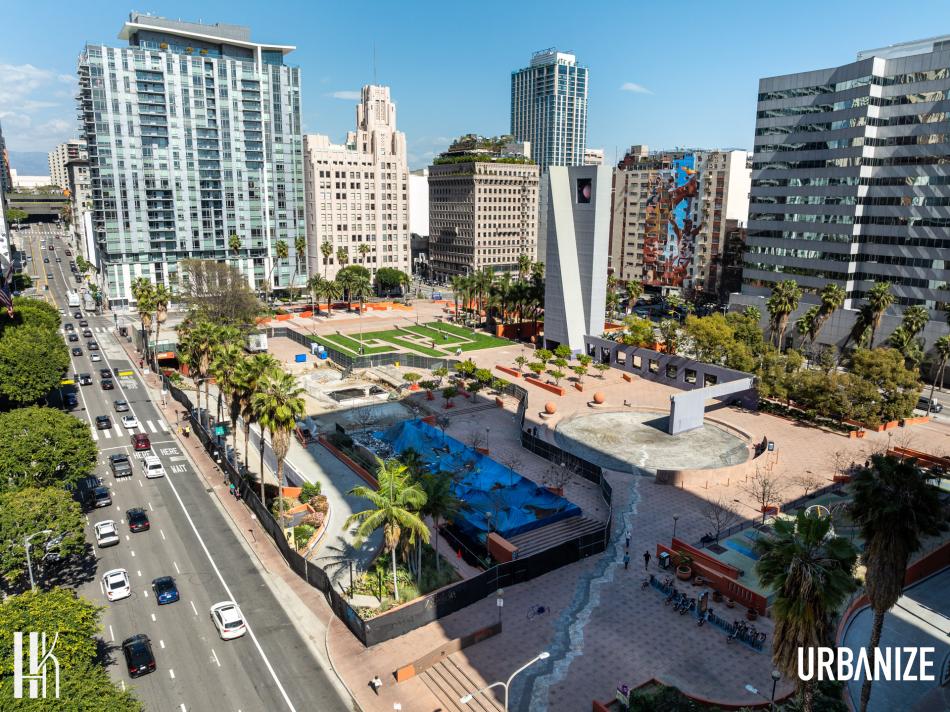In Downtown Los Angeles, the latest Pershing Square re-do is slowly taking shape.
The master plan for the park, developed by Agence Ter and Salt Landscape Architects, originally called for shaving down the roof of a subterranean parking garage to create a more open public square. However, the soaring coast for that plan - estimated several years ago at more than $110 million - has caused the city to pivot way from modifications to the underground structure, and instead adopt a phased approach.
Phase 1A of the revamp, which broke ground in August 2023, has already done away with the cafe structure and escalators on the western side of the park adjacent to Olive Street. In their place, plans call for an entry plaza with two glass elevators providing access to the garage below.
Gruen Associates is serving as architect of record for the project, which will eventually soften edges along 5th and 6th Streets with new landscaping as a Phase 1B. Phase two would focus on the Hill Street side of the park, closing garage entrances and removing walls to make the eastern face of Pershing Square more accessible - previously estimated to cost of $16.5 million.
 Olive Street - proposed modifications looking east from inside Pershing SquareAgence Ter/Gruen Associates
Olive Street - proposed modifications looking east from inside Pershing SquareAgence Ter/Gruen Associates
Work on the central area of the park would be implemented as an as-yet unfunded third phase.
The previous redesign of Pershing Square, done by architect Ricardo Legorreta in the early 1990s, includes references to earthquake fault lines and the aqueducts which have long supplied much of the city's water. However, the existing format has been criticized for its "maze of walls," which cut the park off from its surroundings, creating a fortress-like environment.
Pershing Square's history as public open space dates to the 19th century. According to the L.A. Conservancy, its original layout was created in the 1880s by city engineer Fred Eaton, which later yielded to a Beaux Arts design by architect John Parkinson in the early 20th century. That look was discarded in the 1950s, when the parking garage which now sits below the park was excavated.
Follow us on social media:
Twitter / Facebook / LinkedIn / Threads / Instagram
- Pershing Square (Urbanize LA)









